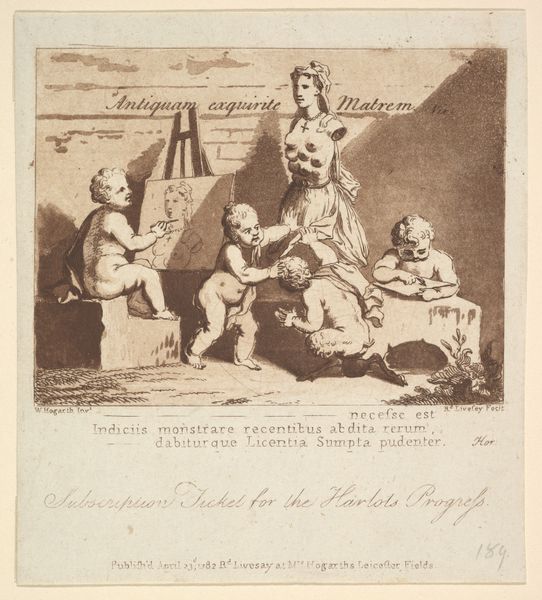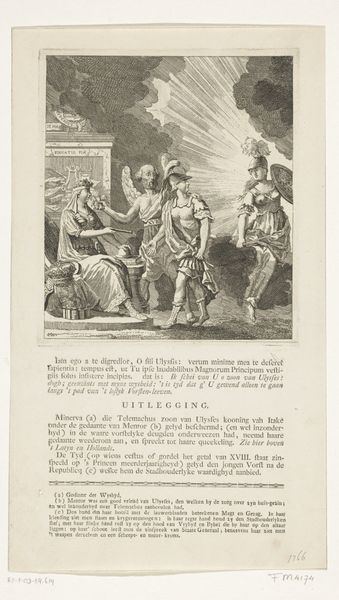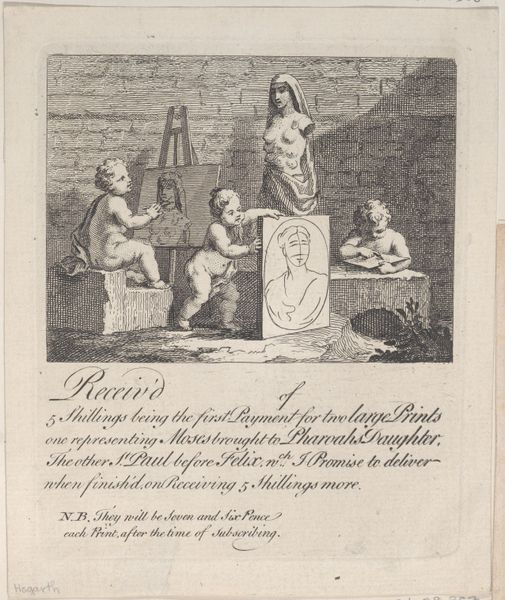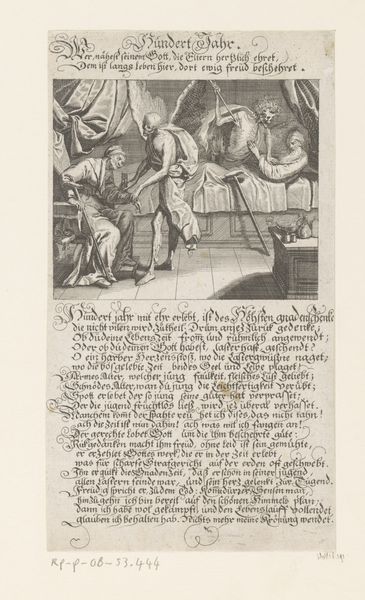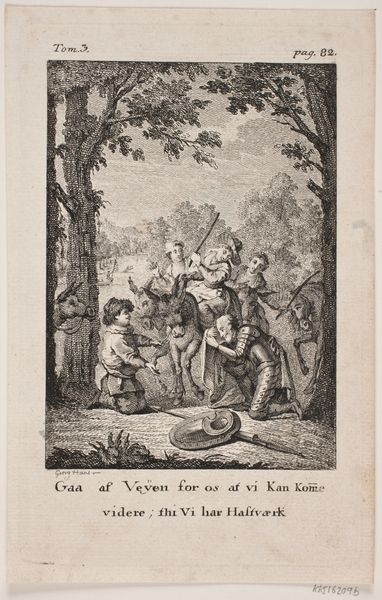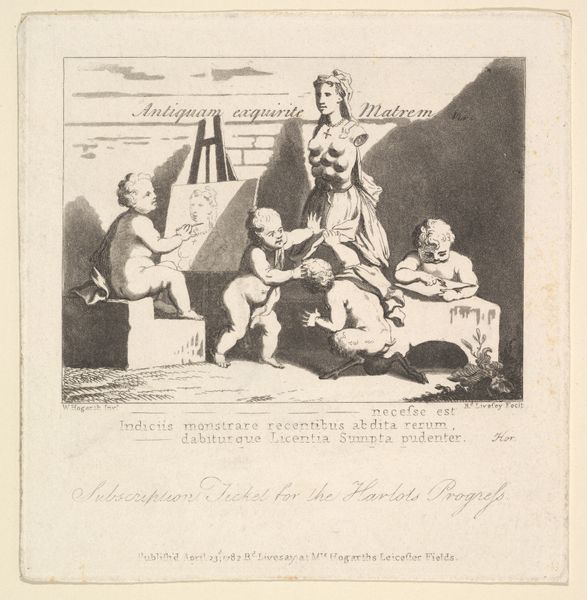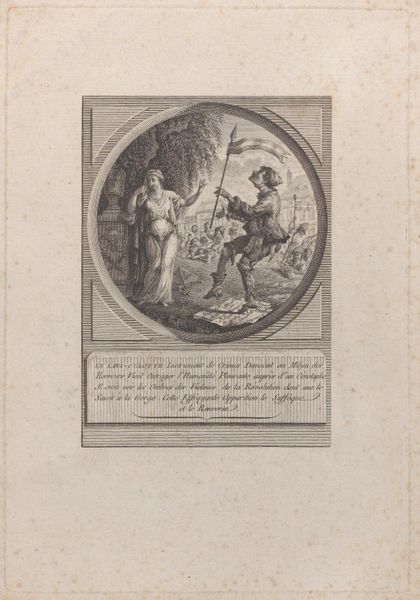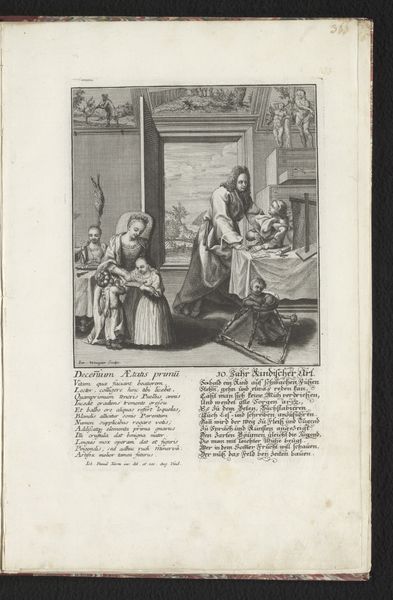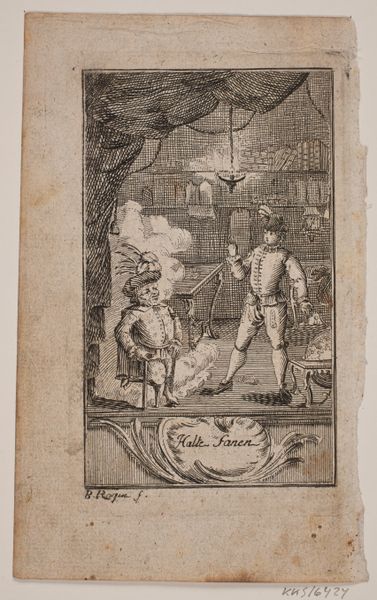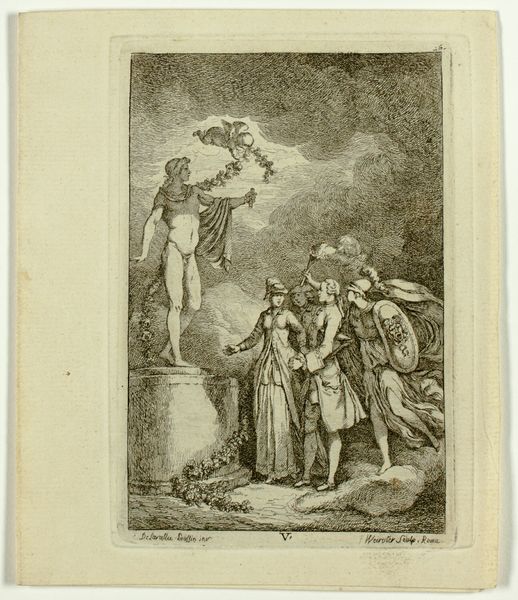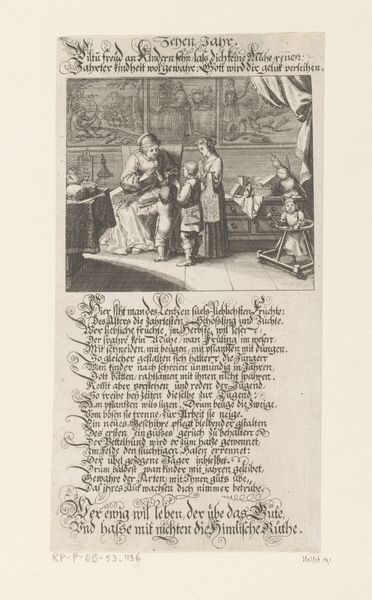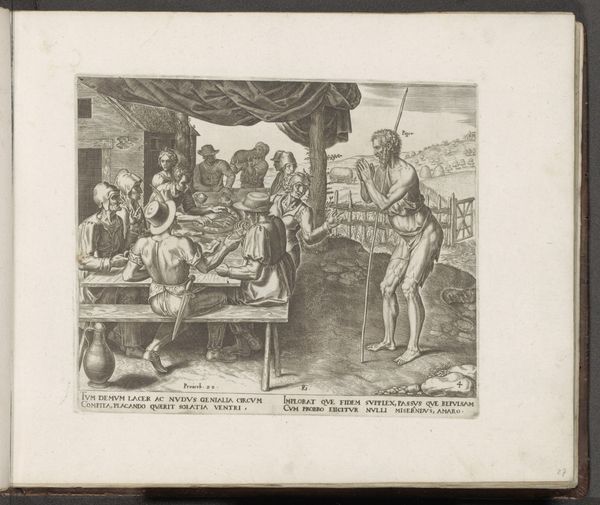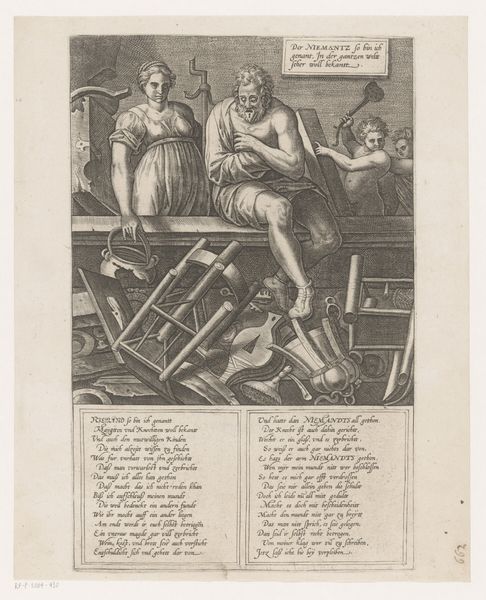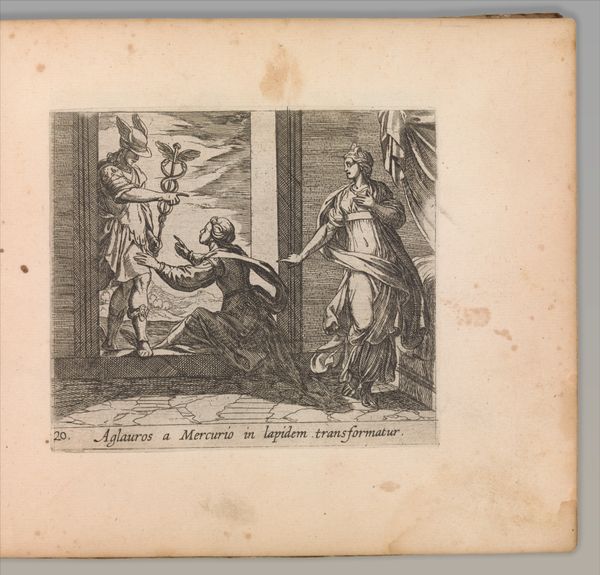
Dimensions: Sheet: 6 15/16 × 5 7/16 in. (17.6 × 13.8 cm)
Copyright: Public Domain
Curator: Examining "Boys Peeping at Nature" by William Hogarth, created sometime between 1737 and 1800 using etching, engraving, and drawing techniques, strikes me with its complex, almost satirical composition. What grabs your attention initially? Editor: For me, it's the contrast! The playful cherubs juxtaposed against the classical statue—it feels irreverent, even a bit cheeky. What are your thoughts on the organization of the figures and how they play within the image space? Curator: Intriguing observation. Consider how the cherubs actively engage with art itself – one sketches, another playfully interacts with the statue, while a third appears absorbed in study. Hogarth orchestrates them to create a visually stimulating experience; observe the rhythmic alternation of light and shadow across each form, from the rounded softness of the cherubs to the starkness of the statue. Do you detect a central point or balance that draws your eye through it? Editor: Perhaps the statue and its gaze that creates that visual anchor. Are you suggesting he's deliberately questioning the role of classical art through the use of contrast in forms? Curator: Indeed! Notice how Hogarth positions them; the cherubs, lively and impulsive, stand in contrast to the statue's stoic idealism. Their presence mocks it almost. Through carefully balanced arrangement, he sets a challenge—classical forms of ideal beauty can be interpreted through raw expression of life. This is a dialogue in pictorial form, conducted with light, form, and the precise strokes of the engraving. Editor: I see, almost like he’s trying to bring high art "down to earth" and maybe playfully mock the stuffy classical ideals? It makes the piece feel very alive. I appreciate that insight into what Hogarth might have been saying about art's accessibility.
Comments
No comments
Be the first to comment and join the conversation on the ultimate creative platform.
